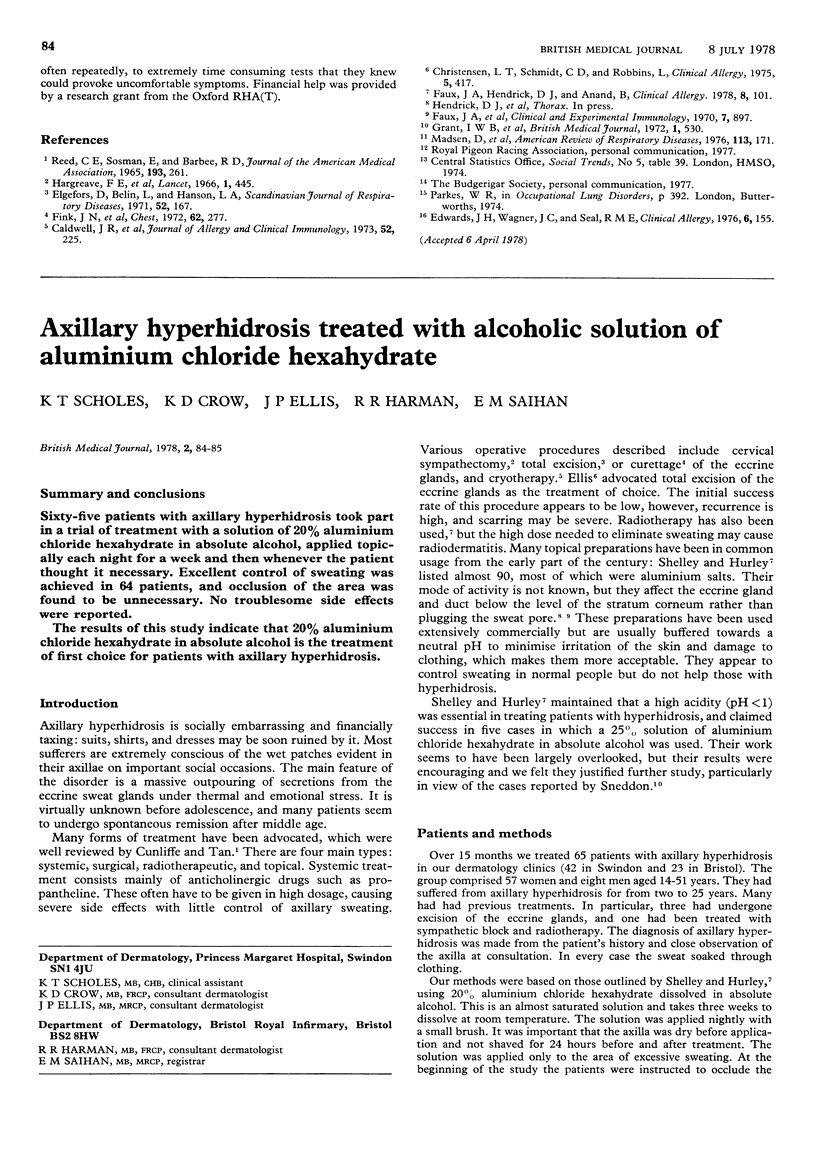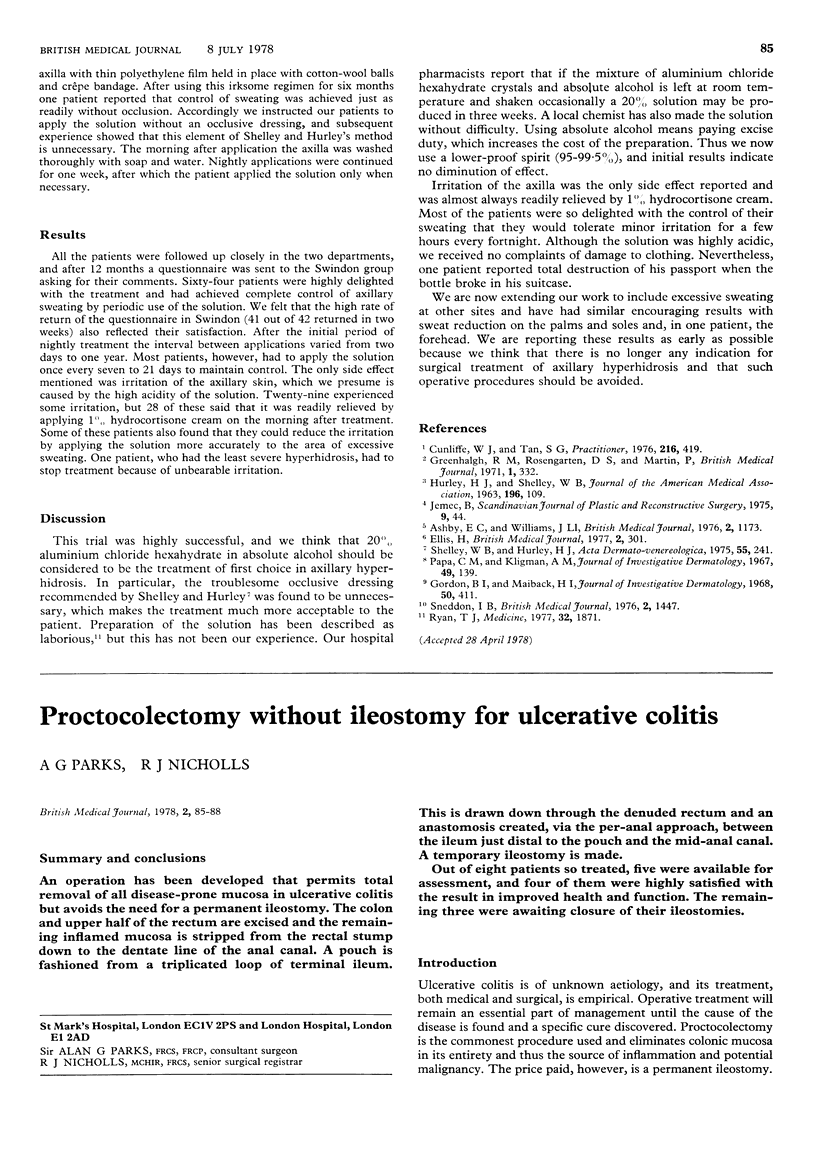Abstract
Sixty-five patients with axillary hyperhidrosis took part in a trial of treatment with a solution of 20% aluminium chloride hexahydrate in absolute alcohol, applied topically each night for a week and then whenever the patient thought it necessary. Excellent control of sweating was achieved in 64 patients, and occlusion of the area was found to be unnecessary. No troublesome side effects were reported. The results of this study indicate that 20% aluminium chloride hexahydrate in absolute alcohol is the treatment of first choice for patients with axillary hyperhidrosis.
Full text
PDF

Selected References
These references are in PubMed. This may not be the complete list of references from this article.
- Ashby E. C., Williams J. L. Cryosurgery for axillary hyperhidrosis. Br Med J. 1976 Nov 13;2(6045):1173–1174. doi: 10.1136/bmj.2.6045.1173-a. [DOI] [PMC free article] [PubMed] [Google Scholar]
- Gordon B. I., Maibach H. I. Studies on the mechanism of aluminum anhidrosis. J Invest Dermatol. 1968 May;50(5):411–413. doi: 10.1038/jid.1968.66. [DOI] [PubMed] [Google Scholar]
- Greenhalgh R. M., Rosengarten D. S., Martin P. Role of sympathectomy for hyperhidrosis. Br Med J. 1971 Feb 6;1(5744):332–334. doi: 10.1136/bmj.1.5744.332. [DOI] [PMC free article] [PubMed] [Google Scholar]
- HURLEY H. J., SHELLEY W. B. A SIMPLE SURGICAL APPROACH TO THE MANAGEMENT OF AXILLARY HYPERIDROSIS. JAMA. 1963 Oct 12;186:109–112. doi: 10.1001/jama.1963.03710020029006. [DOI] [PubMed] [Google Scholar]
- Papa C. M., Kligman A. M. Mechanisms of eccrine anidrosis. II. The antiperspirant effect of aluminum salts. J Invest Dermatol. 1967 Aug;49(2):139–145. doi: 10.1038/jid.1967.115. [DOI] [PubMed] [Google Scholar]
- Shelley W. B., Hurley H. J., Jr Studies on topical antiperspirant control of axillary hyperhidrosis. Acta Derm Venereol. 1975;55(4):241–260. [PubMed] [Google Scholar]


